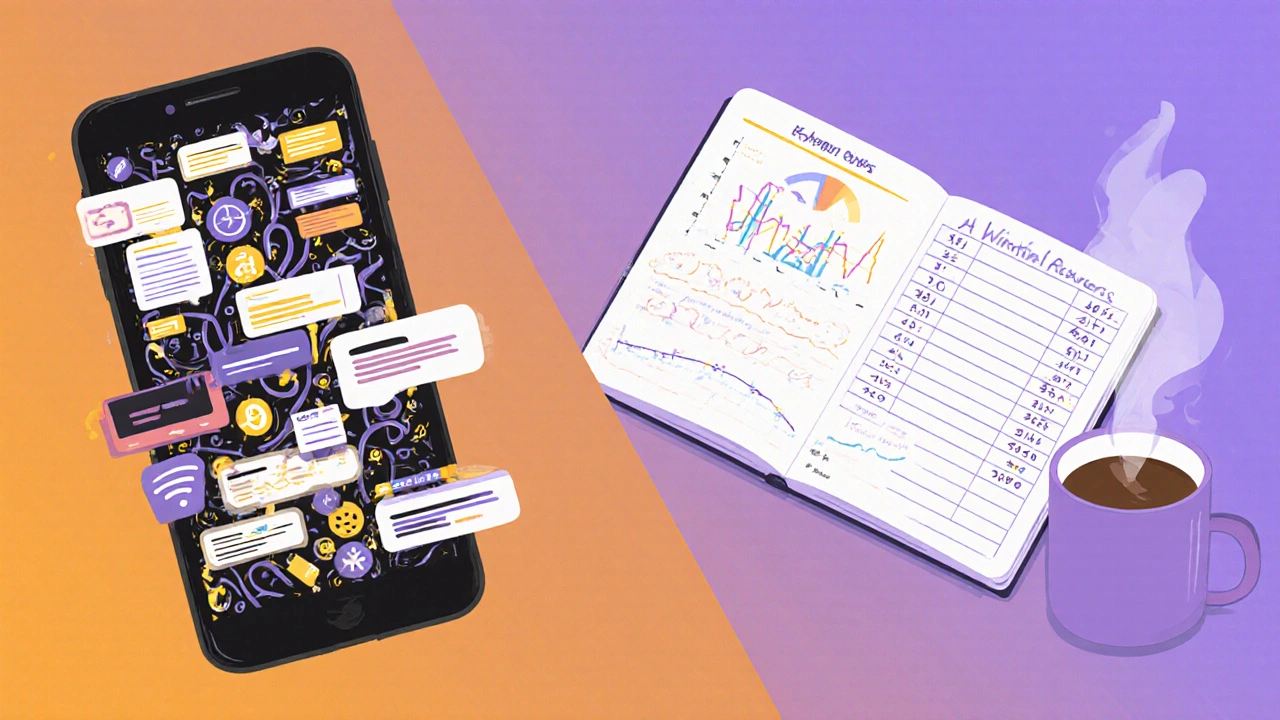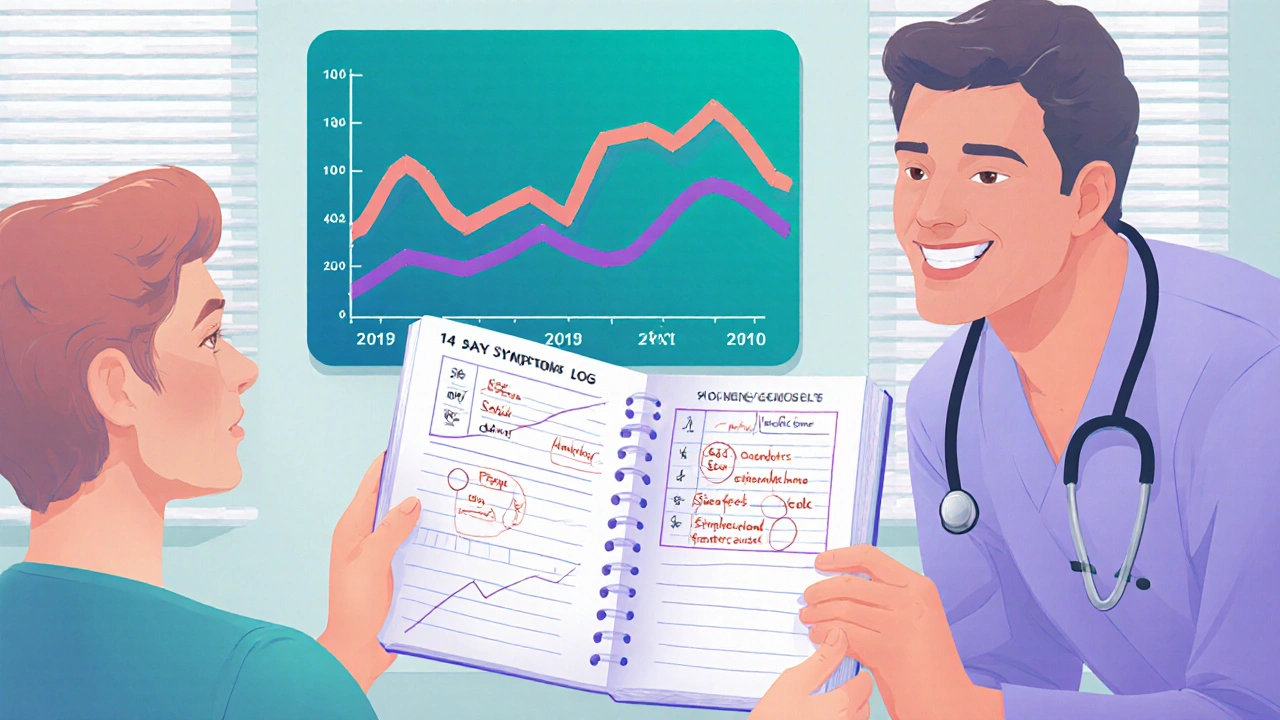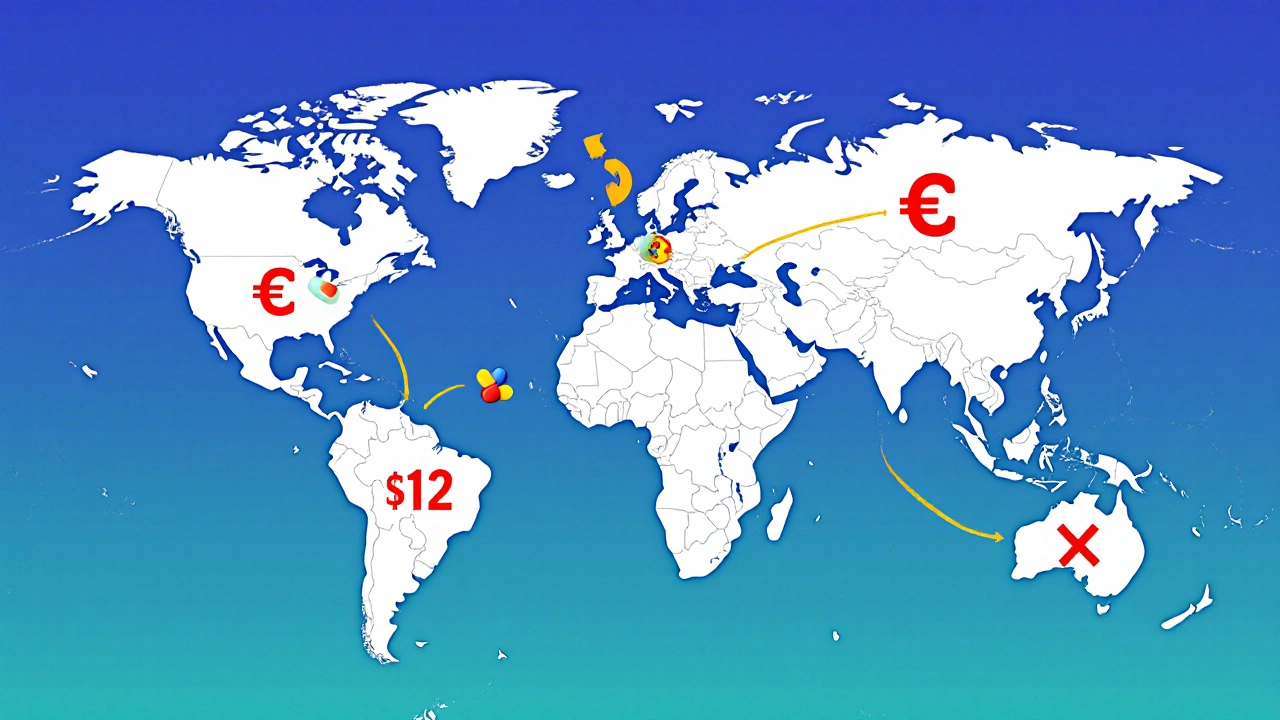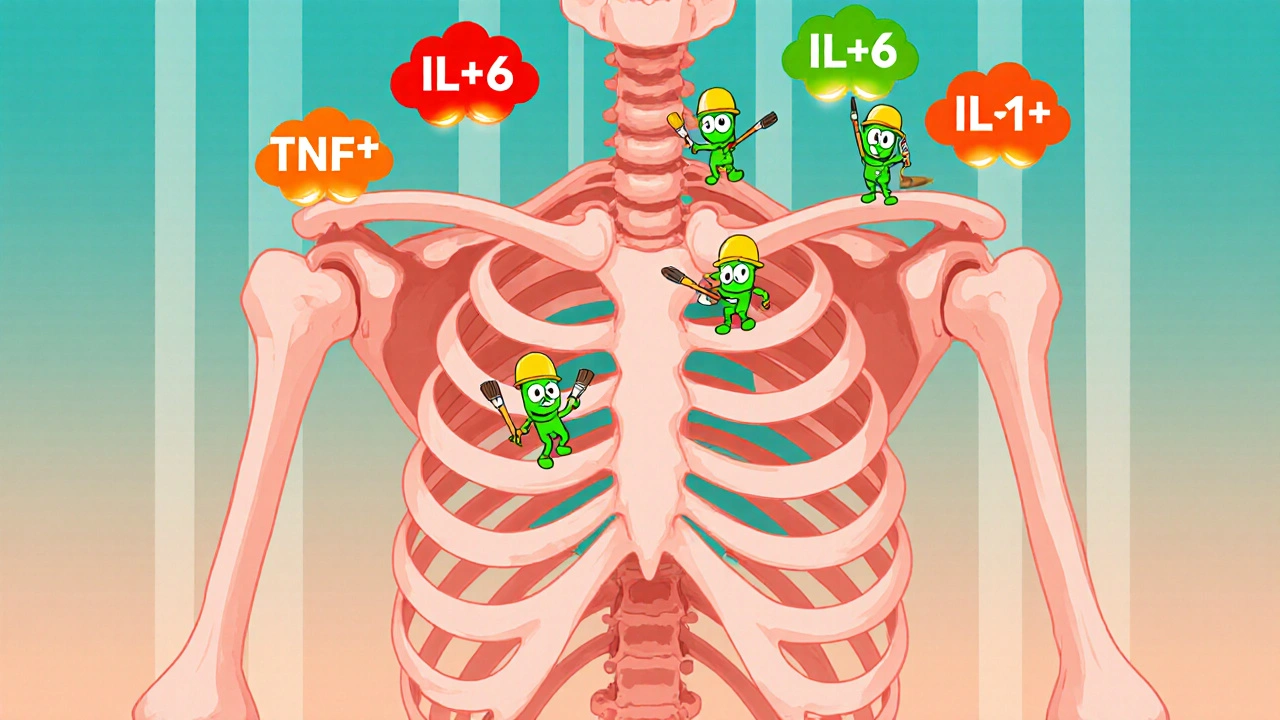
Symptom Tracker & Trigger Finder
How It Works
Use the ABC model: Antecedent (what happened before), Behavior (symptom details), Consequence (what happened after). Track consistently for 14 days to spot patterns.
Just 5 minutes daily makes a difference. Start with these key entries:
Track Your Symptoms
Your Log
Pattern Analysis
No triggers identified yet. Keep logging for 14+ days to spot patterns.
When you start noticing strange symptoms-headaches that come out of nowhere, sudden fatigue after lunch, or anxiety spikes at night-it’s easy to blame stress, bad sleep, or just "being off." But what if those symptoms aren’t random? What if they’re tied to something specific you’re doing, eating, or experiencing every day? That’s where documenting side effects changes everything.
Why Tracking Side Effects Works
Most people wait until symptoms get bad before they do anything. By then, it’s hard to tell what caused them. Tracking side effects turns guesswork into evidence. You’re not just writing down how you feel-you’re building a map of cause and effect. Studies show that people who track their symptoms consistently cut their flare-ups by 40-60%. One 2023 study with over 12,500 migraine sufferers found that those who logged their daily habits identified triggers like aged cheese, artificial sweeteners, or even changes in barometric pressure. Once they avoided those triggers, their headaches dropped sharply. This isn’t just for migraines. People with fibromyalgia, anxiety, epilepsy, and even side effects from medications use the same method. The key isn’t perfection-it’s consistency. You don’t need to log every minute. You just need to notice patterns over time.The ABC Model: Your Simple Tracking System
The most reliable way to track side effects is the ABC model: Antecedent, Behavior, Consequence.- Antecedent: What happened right before the symptom? (e.g., skipped breakfast, slept 5 hours, walked into a bright office)
- Behavior: What symptom occurred? Rate it on a scale of 0-10. (e.g., headache = 7, nausea = 4)
- Consequence: What happened after? Did you take medicine? Lie down? Feel better after 30 minutes?
- Date and time (within 15 minutes if possible)
- What you ate or drank in the last 4 hours
- How much you slept the night before
- Stress level (1-5 scale)
- Medications taken (name, dose, time)
- Symptom intensity and duration
- Any environmental changes (light, noise, temperature)
Tools: Paper vs. Apps
Some people swear by paper journals. Others love apps. Both work-but they suit different people. Paper journals like MedShadow’s symptom tracker have a 91% compliance rate. Why? They’re simple. No passwords. No battery drain. No pop-ups. Adults over 65 are 68% more likely to stick with paper after six months than with apps. Digital tools like MigraineBuddy or Wave offer automation. They sync with your Apple Watch to track sleep, heart rate, and even body temperature. One 2024 update let MigraineBuddy detect early migraine signs 28% faster using temperature shifts. But here’s the catch: 43% of users quit digital apps after two months because they’re too complicated. If you’re tech-savvy and want to see trends over time, go digital. If you’re overwhelmed by screens or just want something you can scribble on while eating breakfast, paper wins.
What You’ll Find (And What You Won’t)
After a few weeks of tracking, you’ll start seeing things you never noticed.- Every time you eat pizza, you get a headache by 8 p.m.
- Your anxiety spikes every Monday after your boss’s team meeting.
- You feel foggy after taking your morning pill-but only if you take it with coffee.
How to Use Your Data
Tracking is useless if you don’t act on it. Once you spot a pattern-say, you get dizzy every time you skip lunch-try changing one thing. Eat a small snack at noon. See if the dizziness stops. If it does, you’ve found a trigger. If not, keep looking. Bring your log to your doctor. A 2024 Mayo Clinic study showed patients who brought detailed symptom journals reduced emergency room visits by 37%. Why? Doctors can see what you can’t: a clear timeline of cause and effect. They can adjust dosages, suggest alternatives, or rule out serious conditions faster. You’ll also notice you need less medication. A MedShadow survey found that 74% of chronic illness patients reduced their drug use by at least 25% after identifying and avoiding triggers.
Common Mistakes and How to Avoid Them
Most people give up because they make these mistakes:- Waiting until the end of the day to write everything down. Memory fades. Symptoms feel worse or less intense when recalled hours later. Record within 2 hours if you can.
- Using vague terms like "felt bad" or "head hurt." Be specific: "throbbing pain behind left eye, started at 2 p.m., lasted 90 minutes, worsened by light."
- Skipping days. Inconsistency kills patterns. Set a daily reminder. Even five minutes counts.
- Trying to track too much. Don’t log your mood, diet, sleep, meds, weather, and social interactions all at once. Start with three: symptom, time, and one possible trigger.
When to Seek Help
Tracking helps-but it’s not a substitute for professional care. If you notice:- Symptoms getting worse over time
- New symptoms like chest pain, vision loss, or confusion
- Dependence on medication to function
What’s Next for Symptom Tracking
The future is bright. The FDA just cleared Twofold’s Symptom Tracker Template for use in clinical trials. The NIH is investing $15.7 million to standardize tracking across 12 chronic conditions. AI tools are being tested to predict flare-ups 48 hours ahead with 63% accuracy. But the core hasn’t changed. It’s still about noticing patterns. Still about writing things down. Still about giving yourself the power to understand your own body. You don’t need to be a scientist. You just need to pay attention.How long should I track side effects before seeing results?
Most people start seeing clear patterns after 14 days of consistent logging. For more complex triggers-like those tied to hormones or environmental changes-30 days is ideal. The key is daily entries, not perfection. Even 5 minutes a day adds up.
Can I track side effects without an app?
Absolutely. Paper journals have a 91% user compliance rate, according to MedShadow’s 2024 report. Many people find them easier to use, especially older adults or those who prefer low-tech solutions. All you need is a notebook and a pen. Focus on the ABC model: what happened before, what symptom occurred, and what happened after.
What’s the most common trigger people miss?
Sleep. Not just how many hours, but when you sleep. Going to bed at 2 a.m. on weekdays and 10 p.m. on weekends confuses your body’s rhythm. This inconsistency triggers migraines, fatigue, and mood swings more than most people realize. Tracking sleep timing-not just duration-is often the missing piece.
Can tracking make anxiety worse?
Yes, for about 12-15% of people with anxiety disorders. If you start obsessing over every tiny symptom or feel guilty for missing a day, it can backfire. If tracking feels like a chore or increases stress, simplify it. Track only the top three symptoms, and give yourself permission to skip days. The goal is awareness, not perfection.
How do I know if a trigger is real or just coincidence?
Test it. If you notice a pattern-say, headaches after eating chocolate-avoid it for 7-10 days. If symptoms drop, reintroduce it. If they return, it’s likely a trigger. Repeat this process 2-3 times. Real triggers are consistent. Coincidences are random.
Should I share my symptom journal with my doctor?
Yes. Patients who bring detailed logs to appointments reduce ER visits by 37%, according to Mayo Clinic data. Doctors can spot trends you miss-like a medication interaction or a seasonal pattern. Even a printed 2-week log gives them far more insight than a 5-minute description.





Debanjan Banerjee
November 21, 2025 AT 00:02I've been tracking my migraines using the ABC method for 3 weeks now, and holy hell-it worked. Turns out, my headaches weren't from stress. They were from the artificial sweetener in my morning protein shake. Cut it out, and boom-70% fewer episodes. No meds needed. This isn't woo-woo, it's science with a notebook.
Steve Harris
November 21, 2025 AT 05:04Love this breakdown. I’ve been using a simple Google Sheet for 6 months now-date, sleep, caffeine, symptom intensity. It’s not glamorous, but it’s saved me from two unnecessary doctor visits. The key? Don’t overthink it. Just write one thing every day. Even if it’s just ‘felt okay.’ Consistency beats perfection every time.
Michael Marrale
November 21, 2025 AT 17:10Wait… so you’re telling me the government isn’t secretly using barometric pressure to control our moods? 😏 I’ve been tracking my anxiety spikes since 2021, and every time the weather changes, my phone glitches, my cat stares at me funny, and my microwave beeps at 3:17 a.m.-it’s all connected. They’re testing neural sync via smart appliances. You’re not just tracking symptoms-you’re witnessing the experiment. 🛰️
David vaughan
November 23, 2025 AT 08:27Okay, so I tried the paper journal… and I cried. Not because it didn’t work-because I missed three days and felt like a failure. Then I remembered: it’s not about being perfect. It’s about being honest. I started writing one line a day: ‘A: ate avocado toast. B: headache, 5/10. C: took nap, felt better.’ That’s it. Now I see patterns. And I’m not judging myself anymore. 🙏
Cooper Long
November 24, 2025 AT 08:44While the methodology presented is empirically sound, one must consider the cultural bias inherent in Western-centric health tracking paradigms. In many non-Western societies, symptomatology is contextualized within holistic frameworks-Ayurveda, Traditional Chinese Medicine-that do not isolate variables in such reductionist fashion. To equate journaling with efficacy is to privilege quantification over lived experience.
Sheldon Bazinga
November 25, 2025 AT 16:04bro i tracked my headaches for 2 weeks and found out i get them after eating pizza… shocker. next u gonna tell me water makes me wet?? this post is just common sense dressed up like a phd thesis. also why is everyone using apps?? just use ur brain. also i'm pretty sure the '2024 harvard study' is fake. i googled it. nothing. 🤡
Sandi Moon
November 25, 2025 AT 21:20How quaint. You believe that a paper notebook can unlock the secrets of your physiology? The body is a symphony of invisible forces-electromagnetic fields, circadian resonance, even lunar phases. You track sleep duration? Pathetic. You should be measuring your pineal gland’s melatonin oscillation in relation to geomagnetic storms. The FDA’s ‘approved’ tracker? A distraction. The real triggers are written in the stars-and your phone’s Bluetooth is jamming them.
Kartik Singhal
November 26, 2025 AT 00:05Lmao this is so basic. I’ve been using a Notion template with 17 variables, AI-powered trend analysis, and auto-sync to my Apple Watch. You’re all stuck in 2018. Paper? Please. If you’re not tracking heart rate variability, cortisol spikes, and gut microbiome diversity, you’re just guessing. Also, your ‘14-day rule’? Outdated. Real data needs 90 days minimum. And yes, I’ve got a chart for that. 📊😎
Logan Romine
November 26, 2025 AT 19:54So we’re just supposed to believe that writing down ‘I ate cheese and got a headache’ is magic? 🤔 Next you’ll tell me that breathing air causes oxygen poisoning. I mean… sure. If you want to turn your life into a spreadsheet of existential dread. But hey-if you find peace in logging your sadness like a grocery list, who am I to judge? Just don’t forget to charge your soul while you’re at it. ☕️📉